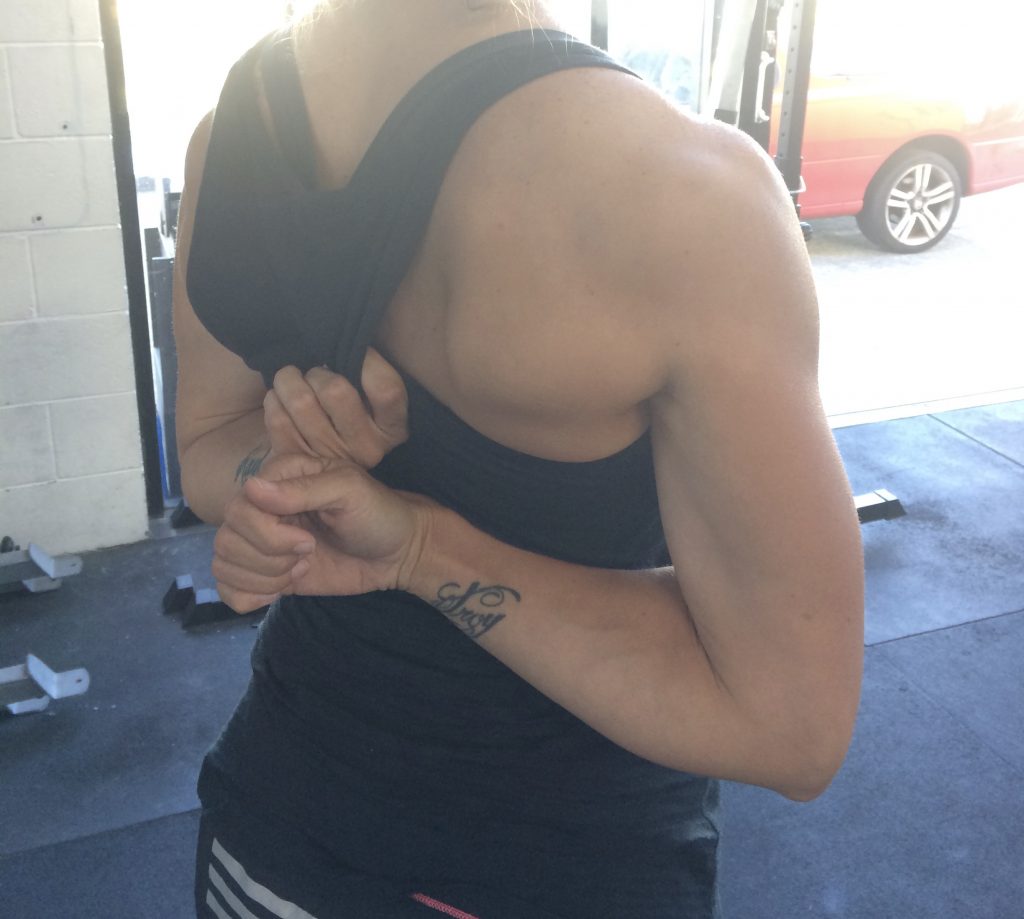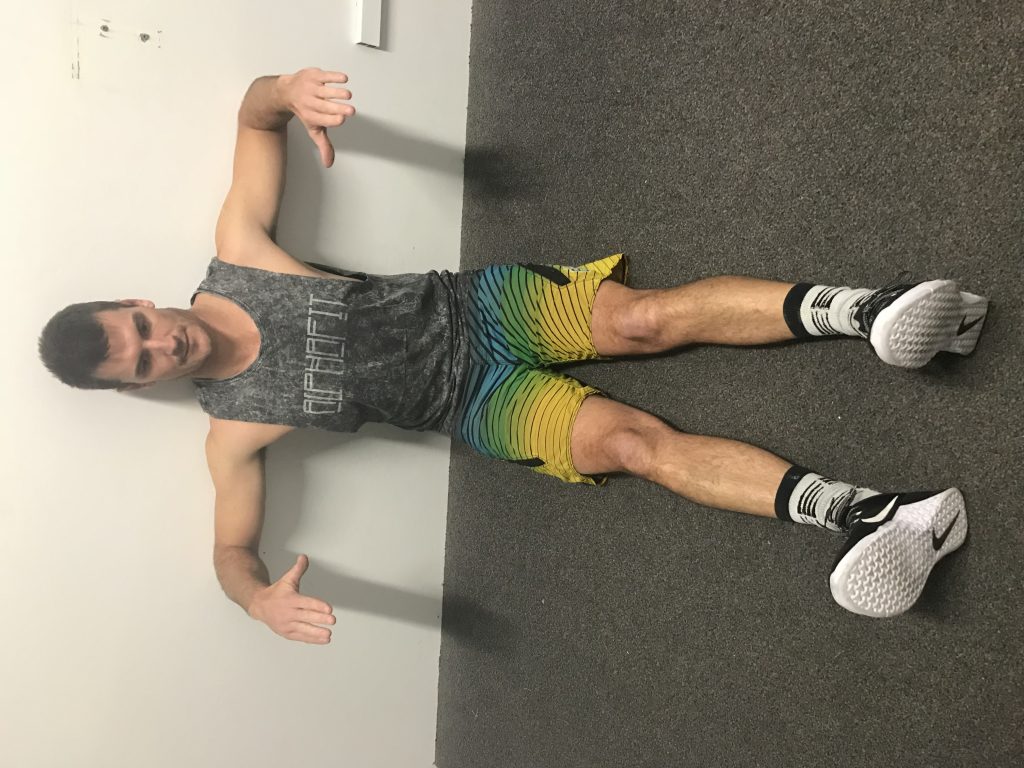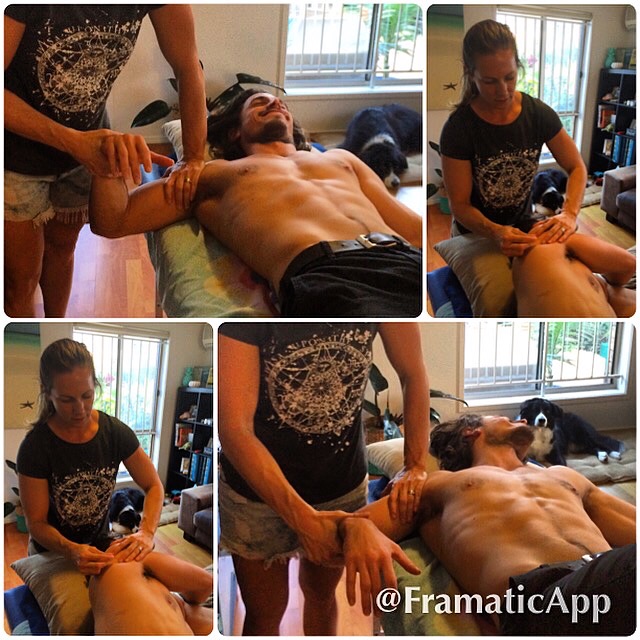Our shoulders are the most mobile joint in the body, mostly due to its ball and socket configuration and we need to have full range of movement in all directions for a healthy shoulders.
The main muscle responsible for shoulder internal rotation is the subscapularis. It is one of the muscles that make up the rotator cuff and also helps to keep the head of the humerus centrally in the glenoid fossa (more on this in another blog post).

One of the movements that gets affected with injury or post-surgery is internal rotation. This movement allows us to put our hand behind our back to get a wallet out of the back pocket, or keep your backside clean! Often, the body will compensate for lack of internal rotation by dumping the shoulder forward and winging of the scapula
If you do Crossfit, you need good shoulder internal rotation for Olympic lifts like the snatch (keeping that bar close to the body is hard without good internal rotation!) and in gymnastics movements like muscle ups and ring dips. Often times, when you are lacking internal rotation at the shoulder, you may also be limited into shoulder extension.
Test for Shoulder Internal Rotation
- Sit against a wall with your back flat against it
- Lift your arms up to 90 degrees with the elbows bent to 90 degrees
- Rotate your forearms towards the floor as far as possible without letting the shoulder come off the wall
- The forearm should line up with the middle of the armpit for adequate mobility
- This test can also be performed lying supine (on your back)

How to improve shoulder internal rotation:
- Trigger point release the muscles of the posterior shoulder (external rotation)

- Restore range of movement through exercises like: towel stretch, sleeper stretch. These can be found in the MobilizeMe App which you can download by clicking here.

- Dry needling – MobilizeMe Physiotherapy Miami specializes in this treatment. The results of dry needling a muscle are immediate and can be pretty spectacular!

- Massage
- Manual therapy
- Exercise
If you’re needing some help with your shoulder issue, book in for an assessment by clicking the button below. MobilizeMe Physiotherapy offers Gap-Free Assessments with your Private Health.
